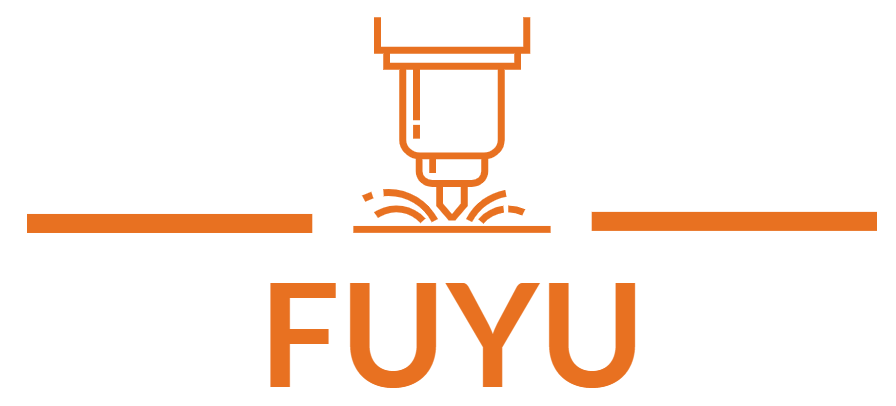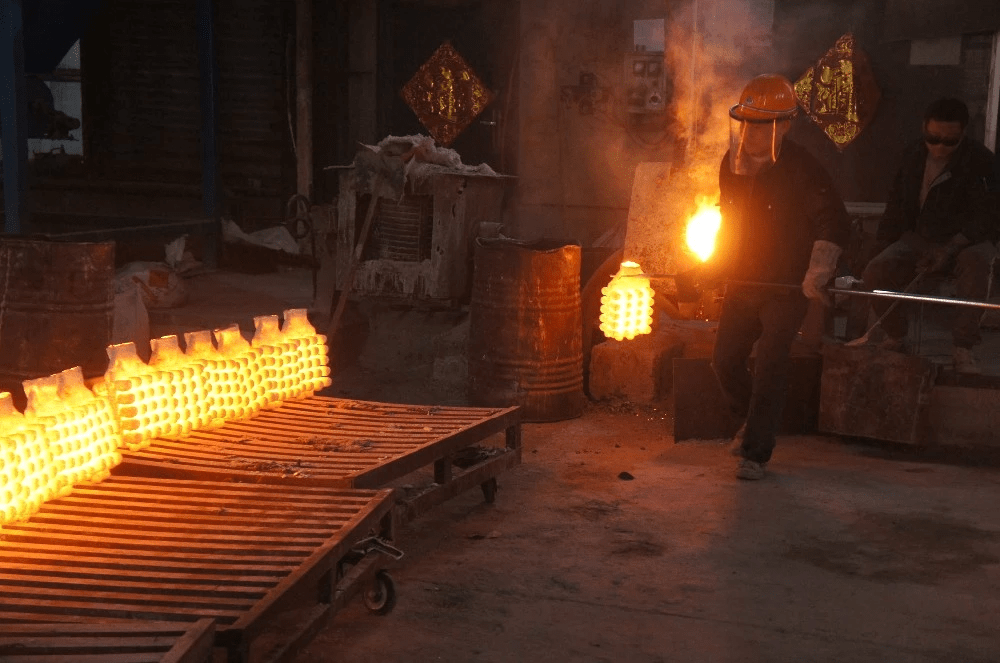Lost Wax Casting: Technique, Process, Applications and Alternatives for Large Machinery Parts Production
Lost wax casting, also known as investment casting, is a versatile metal forming technique with a storied history stretching back to ancient civilizations. It’s a favored process in various industries due to its supreme detail capturing abilities and allowance for complexity in design. Below is a streamlined guide to understanding and applying this method in a range of contexts, from art to aerospace engineering.
Understanding Lost Wax Casting
At its core, lost wax casting involves creating a mold around a wax model that is later melted away to leave a cavity into which metal or glass is poured. This technique enables the creation of pieces with extraordinary detail historically used to preserve the narratives of ancient societies and continues to be a valuable process for modern applications.
Lost Wax Casting Applications
Lost wax casting is esteemed for its precision making it suitable for generating components with fine features, thin walls, and tight tolerances. It’s prevalent in numerous fields, such as transportation, agriculture, and healthcare, offering endless possibilities, from straightforward shapes to complex geometrical designs.
The Lost-Wax Casting Process
Employing either direct or indirect methods, the lost-wax casting involves several intricate steps:
⚪ Model-Making: A wax model is carved or crafted to the desired shape and detail.
⚪ Mold Creation: A master cast is made from the initial wax model and used to make multiple wax molds.
⚪ Producing Wax Patterns: Wax is poured into these molds, providing multiple copies of the master model.
⚪ Assembling Wax Patterns: Multiple wax copies are arranged and attached to a central wax sprue to form a tree-like structure, critical for the subsequent steps.
⚪ Investment: The assembled wax tree is covered in a liquid investment material that hardens into a mold.
⚪ Burnout: The investment mold is treated in a kiln, burning out the wax and leaving a cavity in the shape of the original wax model.
⚪ Pouring: Molten metal is poured into the heated cavity within the investment mold.
⚪ Devesting: After cooling, the investment mold is destroyed, revealing the metal object.
⚪ Finishing: The object undergoes finishing touches to achieve the desired surface finish and specifications.
What are some industries that commonly use lost wax casting?
Lost wax casting finds applications across diverse industries due to its ability to produce complex shapes with high precision and excellent surface finishes. Here are some industries that commonly use lost wax casting:
1. Aerospace: In the aerospace industry, parts such as turbine blades, engine components, and various other precision fittings are made using lost wax casting due to the method’s accuracy and ability to produce parts that can withstand extreme conditions.
2. Automotive: The automotive sector relies on lost wax casting for creating intricate parts like gearbox components, engine parts, and structural elements that require precision and the ability to endure stress and heat.
3. Medical: In medical equipment manufacturing, lost wax casting is used to produce surgical instruments and implantable components where precision and biocompatibility are critical.
4. Dentistry: The dental industry utilizes lost wax casting to fabricate crowns, bridges, and other dental prostheses, benefitting from the process’s ability to replicate detailed anatomy.
5. Jewelry: Jewelry making heavily depends on lost wax casting for the creation of intricate designs, especially those that are difficult or impossible to craft using traditional metalworking techniques.
6. Power Generation: Components for power plants, such as turbine blades and other parts exposed to high-stress conditions, are often made using this method due to its capability to produce resilient and precise castings.
7. Military and Defense: Military and defense manufacturers use lost wax casting for producing components that require strict adherence to specifications and durability under tough conditions.
8. Industrial Machinery: This industry leverages the process for creating complex parts like valves, pumps, and various heavy machinery components.
9. Oil and Gas: The oil and gas industry employs lost wax casting for making parts that require high wear resistance and the ability to withstand the corrosive and high-pressure conditions characteristic of drilling and production environments.
10. Electronics: The electronics industry uses the process to create precise metal components found in devices and systems, where space is often limited and dimensional accuracy is paramount.
Each of these industries benefits from the flexibility, precision, and quality of parts produced through lost wax casting, proving the enduring value of this ancient yet advanced technique.
Are there any limitations or drawbacks to using lost wax casting in industrial machinery production?
While lost wax casting offers numerous advantages in the creation of complex, high-precision parts, there are limitations and drawbacks when it comes to its use in industrial machinery production:
1. Cost: The cost of materials for the molds and the initial setup for production can be significant. Additionally, for low-volume production runs, the investment in equipment and tooling might not be as cost-effective compared to other manufacturing processes.
2. Size Limitations: There are practical limits to the size and weight of parts that can be cast using this technique. This method is more suited to small to medium-sized components. For very large machinery parts, other casting methods might be more appropriate.
3. Lead Times: Although lost wax casting can produce parts with fine detail without the need for additional finishing, the process from design to final product can be time-consuming. This includes mold making, wax patterning, the actual casting, and cooling periods.
4. Material Limitations: While a wide array of metals can be used in lost wax casting, some materials may not be suitable due to their melting temperatures or other properties that affect the mold integrity.
5. Complexity in Casting Thick and Thin Sections: Producing parts that have both very thin and very thick sections can be challenging in lost wax casting, as it can lead to issues with metal flow and cooling which may cause defects like porosity or cold shuts.
6. Mold Costs: For each new part, a new wax pattern and mold are required, and in the case of unique or one-off parts, this increases the production cost. High-quality molds are essential for precision casting but also add to the expense.
7. Waste Material: Although most of the wax can be reclaimed and reused, the ceramic mold is typically broken and discarded after each use. This creates material waste that must be managed, which can be an environmental concern.
8. Metal Quality: There might be instances of inconsistency in metal quality if the casting parameters are not precisely controlled. The presence of impurities or the occurrence of chemical reactions during the process could affect the mechanical properties of the cast part.
What are some alternative casting methods that can be used for producing large machinery parts?
For producing large machinery parts, several alternative casting methods to lost wax casting are employed in the industry, each offering distinct advantages and suited to specific applications based on size, material, and desired properties. Here are some of the most commonly used alternatives:
1. Sand Casting: This is one of the oldest and most versatile casting processes, suitable for creating very large parts (from a few pounds to several tons). A mold is made from sand formed around a pattern of the desired shape. The sand mold halves are separated, the pattern is removed, and molten metal is poured into the cavity. Sand casting is relatively inexpensive and can accommodate a wide variety of metals, but the surface finish and tolerances are not as precise as those achievable through lost wax casting.
2. Die Casting: Best suited for high-volume production, die casting uses reusable metal molds or “dies” and can achieve high precision and smooth surface finishes. However, it is typically used for smaller parts rather than very large components. There are limitations to the size of parts produced due to the equipment required to inject metal into the dies under high pressure.
3. Shell Molding: Similar to sand casting, shell molding uses a resin-coated sand that forms a shell around the pattern. It offers better surface quality and tighter tolerances than traditional sand casting but is more expensive and generally used for medium to small-sized parts.
4. Permanent Mold Casting: In this method, molds are made from metal that can be used repeatedly, making it suitable for medium to high-volume production. While it provides a good surface finish and dimensional accuracy, it is limited by the size and complexity of parts that can be produced because the metal mold must be opened to remove the cast part.
5. Investment Casting (Large Parts): Though lost wax casting (a form of investment casting) is generally associated with smaller precision parts, larger components can also be made using modified investment casting techniques. These involve creating larger molds and using materials capable of handling the increased molten metal volume, but this can be cost-prohibitive and technically challenging.
6. Centrifugal Casting: This method is particularly suited to cylindrical parts like pipes and bushings. Molten metal is poured into a rotating mold, causing the metal to be distributed and settle against the mold walls. It allows for the production of large parts and results in a dense, high-quality surface due to the centrifugal force acting on the molten metal.
7. Plaster Casting: Similar to sand casting but using a plaster mold instead, this method provides a much smoother surface finish and tighter dimensional tolerances. It’s suitable for intricate designs but has limitations on the size and weight of the parts due to the properties of the plaster mold materials.
Choosing the right casting method depends on a detailed assessment of the required part size, complexity, production volume, material specifications, and cost considerations. Manufacturers often select the process that best balances these factors to meet their production needs efficiently.
Conclusion
Lost wax casting is a detailed and precise method but is not ideal for manufacturing large industrial machinery parts due to its cost, size limitations, and longer lead times. When considering production of large components, it’s important to assess other casting methods that can better accommodate the size, cost-effectiveness, and material requirements for such tasks.
FAQs – Lost Wax Casting
Q1: What types of metals can be used in lost wax casting?
A1: A range of metals including bronze, stainless steel, alloy steel, iron, aluminum, and copper are compatible with the lost wax casting process.
Q2: Can lost wax casting be used for mass production?
A2: Yes, lost wax casting is suitable for both small-scale and mass production scenarios.
Q3: What industries benefit the most from lost wax casting?
A3: Key industries include aerospace, automotive, medical, power generation, dentistry, pharmaceuticals, hoisting, and the food industry.
Q4: How does lost wax casting compare to other casting methods?
A4: Lost wax casting excels in producing complex, precise parts with smooth finishes that often require no further machining.
Q5: Are the tools and molds in lost wax casting reusable?
A5: Tools like molds and dies can often be reused, but the investment material is typically destroyed during the devesting phase.
Learn more about our capability, visit https://fuyutechnology.com/investment-casting/


